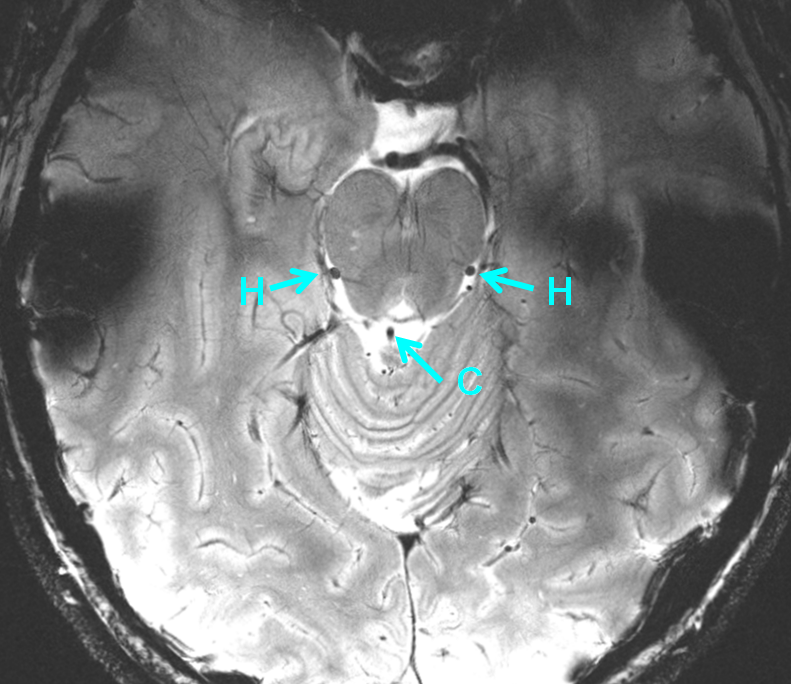Cerebellomesencephalic fissure
Fissure dissection is routinely used in the supratentorial region to access deeply situated pathology while minimizing division of neural tissue. Use of fissure dissection is also practical in the posterior fossa.
Opening the cerebellar-brainstem and adjacent cerebellar fissures provided access to the brainstem surface hidden by the cerebellum, while minimizing division of neural tissue. Most of the major cerebellar arteries, veins, and vital neural structures are located in or near these fissures and can be accessed through them 1).
The trochlear nerves run through the cerebellomesencephalic fissure, as do the superior cerebellar artery (SCA).
1)
Matsushima K, Yagmurlu K, Kohno M, Rhoton AL Jr. Anatomy and approaches along
the cerebellar-brainstem fissures. J Neurosurg. 2015 Aug 14:1-16. [Epub ahead of
print] PubMed PMID: 26274986.
